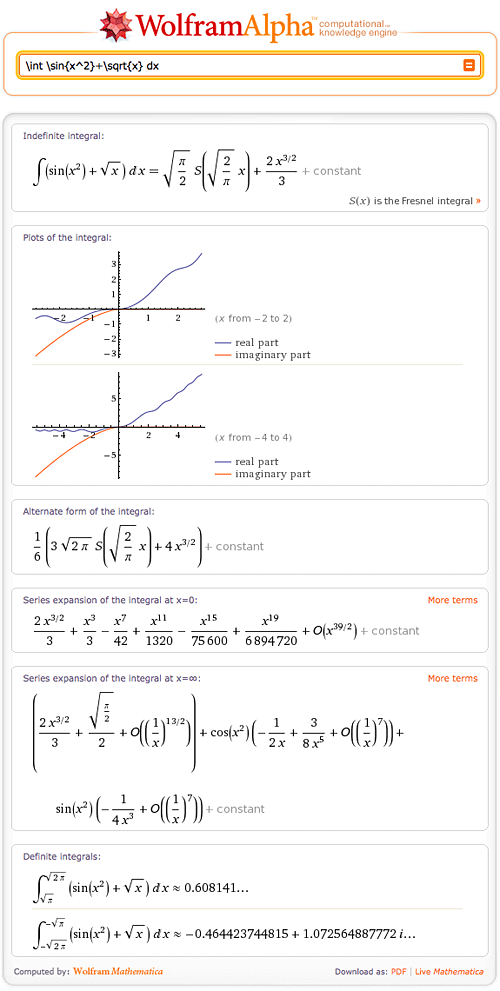 10
10
Wolfram|Alpha Pro has become well known for its ability to show not only the answer to a question, but also the Step-by-step solution to show how to find the answer. Since its first release, we have developed new features and content for Step-by-step solutions. We’ve added hints and the ability to walk through problems one step at a time, and we’ve added support to show multiple methods for solving problems whenever possible. More »
 25
25
Step-by-step solutions, one of the most popular features for mathematics in Wolfram|Alpha, has just received a dramatic expansion in its functionality! With our new interface, you now have the ability to walk through all of our Step-by-step solutions at your own pace, revealing only one step at a time. Some of our programs will offer to guide you with hints when walking through solutions. And for common math problems, we can even show multiple ways to find the solutions. More »
 31
31
In 1977, famed computer scientist Donald Knuth decided he didn’t like the typesetting of the second edition of The Art of Computer Programming. Rather than unhappily accept the results of photographic typesetting techniques, Knuth invented his own digital typesetting solution, TeX, which would eventually become the standard typesetting system for mathematical and academic content. Wikipedia displays math content using a variant of TeX, and research papers from a large range of fields are very commonly submitted in TeX format.
Our team recently added the ability to understand TeX notation and convert it to the Mathematica form used by the powerful Wolfram|Alpha engine. We’ve received many requests for this functionality from people who use Wolfram|Alpha for advanced math and physics. It’s often easy and natural to write mathematics using TeX, whereas it can otherwise be quite difficult to express clearly in plaintext notation.
The beauty of this new capability is that one can now see, compute, and understand typeset mathematics all through the union of TeX notation and Wolfram|Alpha computation. Complicated expressions are now easily represented using the elegance of TeX: More »



